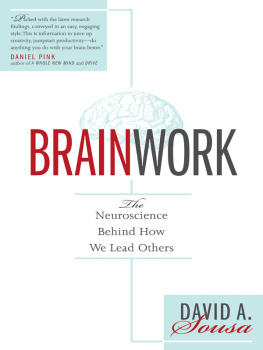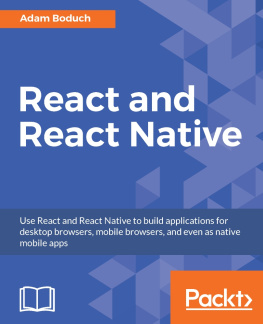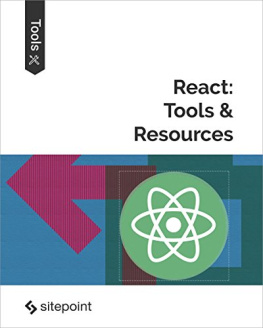Cássio de Sousa Antonio - Pro React
Here you can read online Cássio de Sousa Antonio - Pro React full text of the book (entire story) in english for free. Download pdf and epub, get meaning, cover and reviews about this ebook. City: Berkeley;CA, year: 2015, publisher: Apress, genre: Computer. Description of the work, (preface) as well as reviews are available. Best literature library LitArk.com created for fans of good reading and offers a wide selection of genres:
Romance novel
Science fiction
Adventure
Detective
Science
History
Home and family
Prose
Art
Politics
Computer
Non-fiction
Religion
Business
Children
Humor
Choose a favorite category and find really read worthwhile books. Enjoy immersion in the world of imagination, feel the emotions of the characters or learn something new for yourself, make an fascinating discovery.
- Book:Pro React
- Author:
- Publisher:Apress
- Genre:
- Year:2015
- City:Berkeley;CA
- Rating:3 / 5
- Favourites:Add to favourites
- Your mark:
- 60
- 1
- 2
- 3
- 4
- 5
Pro React: summary, description and annotation
We offer to read an annotation, description, summary or preface (depends on what the author of the book "Pro React" wrote himself). If you haven't found the necessary information about the book — write in the comments, we will try to find it.
Pro React — read online for free the complete book (whole text) full work
Below is the text of the book, divided by pages. System saving the place of the last page read, allows you to conveniently read the book "Pro React" online for free, without having to search again every time where you left off. Put a bookmark, and you can go to the page where you finished reading at any time.
Font size:
Interval:
Bookmark:
- A complete definition of React and an overview of its benefits
- How to use JSX, a JavaScript syntax extension used in React for expressing UI
- How to create React components, complete with props and state
- React is an engine: Reacts site defines it as a library, but I like to use the term engine because it helps convey one of Reacts core strengths: its approach to reactive UI rendering. This approach separates state (all the internal data that defines the application at a given point in time) from the UI presented to the user. With React, you declare how state is represented as visual elements of the DOM and from then on the DOM is automatically updated to reflect state changes.
- The term engine was first used to describe React by Justin Deal because it reminded him of the similarity between reactive rendering and the way game engines work ( https://zapier.com/engineering/react-js-tutorial-guide-gotchas/ ).
- for creating composable user interfaces: Reducing the complexity of creating and maintaining user interfaces is at the heart of React. It embraces the concept of breaking the UI into components, self-contained concern-specific building blocks, which are easy to reuse, extend, and maintain.
- using JavaScript and (optionally) XML: React is a pure JavaScript library that can be used on the browser, the server, and mobile devices. As you will see in this chapter, it has an optional syntax that allows you to use XML to describe your UI. As strange as it may look at first, it turns out that XML is great for describing user interfaces: its declarative, its easy to spot the relationship between elements, and its easy to visualize the overall structure of your UI.
Font size:
Interval:
Bookmark:
Similar books «Pro React»
Look at similar books to Pro React. We have selected literature similar in name and meaning in the hope of providing readers with more options to find new, interesting, not yet read works.
Discussion, reviews of the book Pro React and just readers' own opinions. Leave your comments, write what you think about the work, its meaning or the main characters. Specify what exactly you liked and what you didn't like, and why you think so.












